ART NEWS:Jan.01
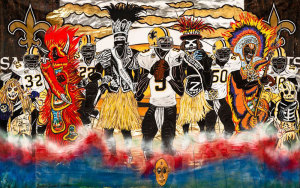 Keith Duncan is a visual storyteller, depicting stories both familiar to all and those specific to New Orleans, with a focus on a multidimensional approach both in subject matter and material. In his solo exhibition “The Big Easy” presents three bodies of work. On presentation are two large-scale paintings portraying two scenes recognizable to all, “The Wedding” and “The Funeral”, both part of Duncan’s series “Satire and Storytelling”. The work “Flash of the Spirit” describes the influence of aesthetics of five African civilizations on the art practices of black artists today. The mask highlighted at the bottom-center of Duncan’s painting is pulled from the cover of the book. The third body of work included in the exhibition is titled, “Black Plight”. This series consists of nine small paintings of historical events divided up thematically and by time period; such as Reconstruction Era, Civil Rights Era, and Black Star Era. Info: Fort Gansevoort, 5 Ninth Avenue, New York, Duration: 10/1-23/2/19, Days & Hours: Tue-Sat 11:00-18:00, www.fortgansevoort.com
Keith Duncan is a visual storyteller, depicting stories both familiar to all and those specific to New Orleans, with a focus on a multidimensional approach both in subject matter and material. In his solo exhibition “The Big Easy” presents three bodies of work. On presentation are two large-scale paintings portraying two scenes recognizable to all, “The Wedding” and “The Funeral”, both part of Duncan’s series “Satire and Storytelling”. The work “Flash of the Spirit” describes the influence of aesthetics of five African civilizations on the art practices of black artists today. The mask highlighted at the bottom-center of Duncan’s painting is pulled from the cover of the book. The third body of work included in the exhibition is titled, “Black Plight”. This series consists of nine small paintings of historical events divided up thematically and by time period; such as Reconstruction Era, Civil Rights Era, and Black Star Era. Info: Fort Gansevoort, 5 Ninth Avenue, New York, Duration: 10/1-23/2/19, Days & Hours: Tue-Sat 11:00-18:00, www.fortgansevoort.com
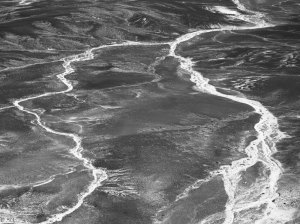 In “The Critical Zone”, Katherine Wolkoff presents new landscape photographs that describe the geological, botanical and zoological markings visible in “the critical zone,” earth’s permeable layer which extends from the tops of the trees to the bottom of the ground water. Scientists argue that this zone (where rock, soil water and air meet) will characterize the future environmental health of the earth. Like a scientific researcher, Wolkoff travels to public lands throughout the United States to photograph the landscape of the critical zone. She uses a range of techniques from the 4×5 view camera to a flatbed scanner, utilizing subjective post-production techniques that expand the photography beyond science. The work in this show is notable that it is her first body of black and white photographs. The photographs in “The Critical Zone” leave the viewer unsure about where they stand, the scale and point of view are vertiginous. It is also unclear what the future holds for the state of the natural world. Info: Benrubi Gallery, 521 West 26th Street, 2nd Floor, New York, Duration: 10/1-2/3/19, Days & Hours: Tue-Sat 11:00-18:00, https://benrubigallery.com
In “The Critical Zone”, Katherine Wolkoff presents new landscape photographs that describe the geological, botanical and zoological markings visible in “the critical zone,” earth’s permeable layer which extends from the tops of the trees to the bottom of the ground water. Scientists argue that this zone (where rock, soil water and air meet) will characterize the future environmental health of the earth. Like a scientific researcher, Wolkoff travels to public lands throughout the United States to photograph the landscape of the critical zone. She uses a range of techniques from the 4×5 view camera to a flatbed scanner, utilizing subjective post-production techniques that expand the photography beyond science. The work in this show is notable that it is her first body of black and white photographs. The photographs in “The Critical Zone” leave the viewer unsure about where they stand, the scale and point of view are vertiginous. It is also unclear what the future holds for the state of the natural world. Info: Benrubi Gallery, 521 West 26th Street, 2nd Floor, New York, Duration: 10/1-2/3/19, Days & Hours: Tue-Sat 11:00-18:00, https://benrubigallery.com
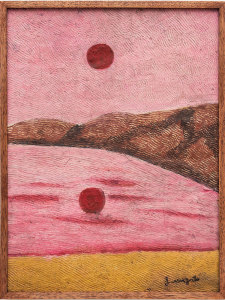 The first solo presentation of Amadeo Luciano Lorenzato’s (1900–1995) work outside of Brazil is on presentation at David Zwirner. Among the foremost Brazilian artists of his generation, Lorenzato developed a singular body of paintings centred on his fastidious observations of the everyday subjects he encountered in his hometown of Belo Horizonte, Brazil, including land- and townscapes, favelas, and the people he came across in his meandering walks through town. Using a rich palette of self-made pigments to describe his surroundings, Lorenzato’s distinct compositions are characterised by reduced geometric forms and richly textured surfaces that he achieved through the use of brushes, combs, and forks. Despite studying for a brief period at the Reale Accademia delle Arti in Vicenza, Italy, in 1925, Lorenzato was mostly self-taught, developing his technical proficiency in painting through various jobs he held as a mural painter in Brazil, and later, restoring frescoes in Rome. Info: David Zwirner Gallery, 24 Grafton Street, London, Duration: 10/1-9/2/19, Days & Hours: Tue-Sat 10:00-18:00, www.davidzwirner.com
The first solo presentation of Amadeo Luciano Lorenzato’s (1900–1995) work outside of Brazil is on presentation at David Zwirner. Among the foremost Brazilian artists of his generation, Lorenzato developed a singular body of paintings centred on his fastidious observations of the everyday subjects he encountered in his hometown of Belo Horizonte, Brazil, including land- and townscapes, favelas, and the people he came across in his meandering walks through town. Using a rich palette of self-made pigments to describe his surroundings, Lorenzato’s distinct compositions are characterised by reduced geometric forms and richly textured surfaces that he achieved through the use of brushes, combs, and forks. Despite studying for a brief period at the Reale Accademia delle Arti in Vicenza, Italy, in 1925, Lorenzato was mostly self-taught, developing his technical proficiency in painting through various jobs he held as a mural painter in Brazil, and later, restoring frescoes in Rome. Info: David Zwirner Gallery, 24 Grafton Street, London, Duration: 10/1-9/2/19, Days & Hours: Tue-Sat 10:00-18:00, www.davidzwirner.com
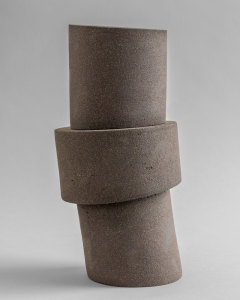 Largely inspired by themes of adolescence, wonder and geometry, often in relationship with the notion of play, Carpentier works primarily with sculpture and photography. He modifies and combines familiar forms, imagery or graphics to transform the original item, creating new and surprising ways of seeing. References to early 20th century art history and so-called primitive art are omnipresent in his oeuvre. Patrick Carpentier presents his solo exhibition “A SHORT-TERM EFFECT, AN ECHO”. Often taking lyrics from songs by the British rock group The Cure, the artist evokes a certain period in time. The word “echo” is essential, as throughout this exhibition the spectator is confronted with works which develop in multiple forms or variations, evoking a sense of familiarity. Working with the idea of assemblage as the main concept for the exhibition, the artist presents a series of sculptures in ceramic, metal and mixed media, as well as a series of collages. Info: MLF l Marie-Laure Fleisch, 13 rue Saint-George, Brussels, Duration: 11/1-16/2/19, Days & Hours: Tue-Sat 10:00-18:00, www.galleriamlf.com
Largely inspired by themes of adolescence, wonder and geometry, often in relationship with the notion of play, Carpentier works primarily with sculpture and photography. He modifies and combines familiar forms, imagery or graphics to transform the original item, creating new and surprising ways of seeing. References to early 20th century art history and so-called primitive art are omnipresent in his oeuvre. Patrick Carpentier presents his solo exhibition “A SHORT-TERM EFFECT, AN ECHO”. Often taking lyrics from songs by the British rock group The Cure, the artist evokes a certain period in time. The word “echo” is essential, as throughout this exhibition the spectator is confronted with works which develop in multiple forms or variations, evoking a sense of familiarity. Working with the idea of assemblage as the main concept for the exhibition, the artist presents a series of sculptures in ceramic, metal and mixed media, as well as a series of collages. Info: MLF l Marie-Laure Fleisch, 13 rue Saint-George, Brussels, Duration: 11/1-16/2/19, Days & Hours: Tue-Sat 10:00-18:00, www.galleriamlf.com
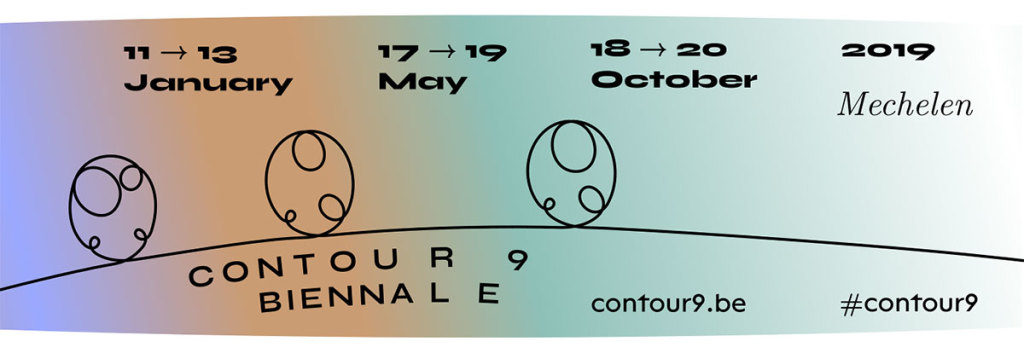 Contour Biennale is one of the most easily recognizable, large-scale exhibition platforms in Belgium: a unique initiative engaging with local and international artists who focus on the moving image and its wider representation in installations, sound and performance. The projects presented during Contour Biennale 9: “Coltan as Cotton” are inspired by and relate to the city of Mechelen, its inhabitants and, more broadly, Belgium’s recent colonial history. It also poses more general questions about how to position a biennial, whom a biennial addresses and whether we can find sustainable ways to work on a biennial. The curator has designed this edition in phases: a continuum of projects in various formats, in contrast to earlier editions when the biennial ran for 10 weeks. Between September 2018 and October 2019, three major public presentations and several other events will shape the Contour Biennale 9. These phases are aligned with the lunar cycle, one of our most natural rhythms, which induces a cyclical conception of time. The title is borrowed from the poem The Bear/Coltan as Cotton by the slammer, musician and poet Saul Williams.Info: Curator: Nataša Petrešin-Bachelez, Contour Biennale 9: Coltan as Cotton, Mechelen Academy & Auditorium Cultural Centre Mechelen, Minderbroedersgang 5 (both venues), Mechelen; nona arts centre, Begijnenstraat 19, Mechelen; ROJM, Battelsesteenweg 50A, Mechelen; Khiasma, 15 rue Chassagnolle, Les Lilas and Netwerk Aalst, Houtkaai 15, Aalst, Duration 11-13/1/19, 17-19/5/19 & 18-20/10/19, https://contour9.be
Contour Biennale is one of the most easily recognizable, large-scale exhibition platforms in Belgium: a unique initiative engaging with local and international artists who focus on the moving image and its wider representation in installations, sound and performance. The projects presented during Contour Biennale 9: “Coltan as Cotton” are inspired by and relate to the city of Mechelen, its inhabitants and, more broadly, Belgium’s recent colonial history. It also poses more general questions about how to position a biennial, whom a biennial addresses and whether we can find sustainable ways to work on a biennial. The curator has designed this edition in phases: a continuum of projects in various formats, in contrast to earlier editions when the biennial ran for 10 weeks. Between September 2018 and October 2019, three major public presentations and several other events will shape the Contour Biennale 9. These phases are aligned with the lunar cycle, one of our most natural rhythms, which induces a cyclical conception of time. The title is borrowed from the poem The Bear/Coltan as Cotton by the slammer, musician and poet Saul Williams.Info: Curator: Nataša Petrešin-Bachelez, Contour Biennale 9: Coltan as Cotton, Mechelen Academy & Auditorium Cultural Centre Mechelen, Minderbroedersgang 5 (both venues), Mechelen; nona arts centre, Begijnenstraat 19, Mechelen; ROJM, Battelsesteenweg 50A, Mechelen; Khiasma, 15 rue Chassagnolle, Les Lilas and Netwerk Aalst, Houtkaai 15, Aalst, Duration 11-13/1/19, 17-19/5/19 & 18-20/10/19, https://contour9.be
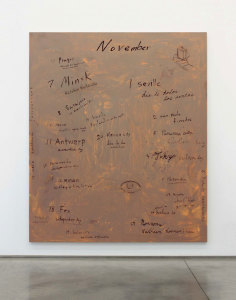 Tam Ochiai’s practice encompasses a range of different media including drawing, painting, three-dimensional works, videos, performance, book production, to writing poetry and text. A total of 12 painting works, one representing each month of the year, are presented in Tam Ochiai’s solo exhibition “Itinerary, non?”, each month is depicted with a different background color, upon which the actual names of holidays and national holidays celebrated that month in various countries across the world are painted along with the names of their cities. The works thus serve as an “itinerary,” inviting viewers to travel the cities of the globe through these respective holidays. What had served as the initial idea for this work surrounding the theme of holidays was a drawing Ochiai presented in New York in 2008. Derived from the concept of “things that are a surplus (noise)” such as “a cat’s tail” and “mistakes” that he had contemplated within his practice at the time, “holidays” could also be considered as a “surplus” or “additional thing”. Info: Tomio Koyama Gallery, Complex 665 2F, 6-5-24 Roppongi, Minato-ku, Tokyo, Duration: 12/1-9/2/19, Days & Hours: Tue-Sat 11:00-19:00, http://tomiokoyamagallery.com
Tam Ochiai’s practice encompasses a range of different media including drawing, painting, three-dimensional works, videos, performance, book production, to writing poetry and text. A total of 12 painting works, one representing each month of the year, are presented in Tam Ochiai’s solo exhibition “Itinerary, non?”, each month is depicted with a different background color, upon which the actual names of holidays and national holidays celebrated that month in various countries across the world are painted along with the names of their cities. The works thus serve as an “itinerary,” inviting viewers to travel the cities of the globe through these respective holidays. What had served as the initial idea for this work surrounding the theme of holidays was a drawing Ochiai presented in New York in 2008. Derived from the concept of “things that are a surplus (noise)” such as “a cat’s tail” and “mistakes” that he had contemplated within his practice at the time, “holidays” could also be considered as a “surplus” or “additional thing”. Info: Tomio Koyama Gallery, Complex 665 2F, 6-5-24 Roppongi, Minato-ku, Tokyo, Duration: 12/1-9/2/19, Days & Hours: Tue-Sat 11:00-19:00, http://tomiokoyamagallery.com
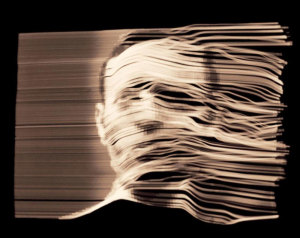 Under the impulse of Nam June Paik, the pioneers of video art wanted to blow up the aesthetic limits of traditional art by using technology, of which the product was more communication than an individual artwork. Video art was born from an interest in the intangible message of electronics as distinct from the static physical forms of traditional plastic arts. This idea of a changing world, which has led to a new intellectual era since the 1960s, is especially interesting because it parallels with the reflections that could be heard in the early 1990s when the computer became “personal,” i.e. accessible for everyone.To explore the relationships between two worlds, one analogue and the other digital, the exhibition “update_7. Mémoires Vives” present installations, video films, sculptures, photographs, generative works and archival documents. Some of the works presented are considered as milestones of contemporary art. Info: Curator: Jean-Marie Dallet, Zebrastraat, Zebrastraat 32/00, Gent, Duration: 12/1-10/3/19, Days & Hours: Wed-Sun 14:00-18:00, www.zebrastraat.be & BOZAR, Rue Ravenstein 23, Brussels, Duration: 12/1-10/3/19, Days & Hours: Tue-Wed & Fri-Sun 10:00-18:00, Thu 10:00-21:00, www.bozar.be
Under the impulse of Nam June Paik, the pioneers of video art wanted to blow up the aesthetic limits of traditional art by using technology, of which the product was more communication than an individual artwork. Video art was born from an interest in the intangible message of electronics as distinct from the static physical forms of traditional plastic arts. This idea of a changing world, which has led to a new intellectual era since the 1960s, is especially interesting because it parallels with the reflections that could be heard in the early 1990s when the computer became “personal,” i.e. accessible for everyone.To explore the relationships between two worlds, one analogue and the other digital, the exhibition “update_7. Mémoires Vives” present installations, video films, sculptures, photographs, generative works and archival documents. Some of the works presented are considered as milestones of contemporary art. Info: Curator: Jean-Marie Dallet, Zebrastraat, Zebrastraat 32/00, Gent, Duration: 12/1-10/3/19, Days & Hours: Wed-Sun 14:00-18:00, www.zebrastraat.be & BOZAR, Rue Ravenstein 23, Brussels, Duration: 12/1-10/3/19, Days & Hours: Tue-Wed & Fri-Sun 10:00-18:00, Thu 10:00-21:00, www.bozar.be
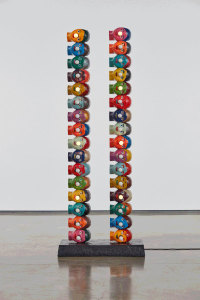 Over the last 20 years Evan Holloway’s revisionist take on the modernist sculptural lexicon has become an indelible feature in the Los Angeles cultural imagination. “Outdoor Sculpture” is Evan Holloway’s first exhibition to consist solely of objects conceived for outdoor installation. Though they require intensive planning and fabrication, the open-air settings for which they are intended are necessarily less predictable than white-walled galleries. Holloway thereby reimagines the ephemerality and provisional quality of his earlier work, which often included performative elements or unorthodox materials, in a more expansive register and at a larger scale. As he confronts technical issues of size, visibility, and durability that come along with the possibility of placing objects in the landscape, his forms have evolved in a variety of ways; the exhibition showcases a diverse range of sculptural languages, each of which addresses a different set of questions regarding form and signification. Info: David Kordansky Gallery, 5130 W. Edgewood Pl., Los Angeles, Duration: 12/1-2/3/19, Days & Hours: Tue-Sat 10:00-18:00, http://davidkordanskygallery.com
Over the last 20 years Evan Holloway’s revisionist take on the modernist sculptural lexicon has become an indelible feature in the Los Angeles cultural imagination. “Outdoor Sculpture” is Evan Holloway’s first exhibition to consist solely of objects conceived for outdoor installation. Though they require intensive planning and fabrication, the open-air settings for which they are intended are necessarily less predictable than white-walled galleries. Holloway thereby reimagines the ephemerality and provisional quality of his earlier work, which often included performative elements or unorthodox materials, in a more expansive register and at a larger scale. As he confronts technical issues of size, visibility, and durability that come along with the possibility of placing objects in the landscape, his forms have evolved in a variety of ways; the exhibition showcases a diverse range of sculptural languages, each of which addresses a different set of questions regarding form and signification. Info: David Kordansky Gallery, 5130 W. Edgewood Pl., Los Angeles, Duration: 12/1-2/3/19, Days & Hours: Tue-Sat 10:00-18:00, http://davidkordanskygallery.com
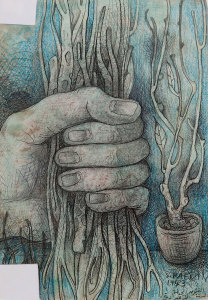 Samir Rafi’s experiences in Cairo before and after 1952, his imprisonment in Algeria in the 1960s, and his self-imposed exile in Paris all manifest themselves in his work through his characteristic technique and symbolism. Works from the four main phases of Samir Rafi’s artistic journey are presented in “Spotlight” an exhibition of works spanning half a century that is on presentation at Green Art Gallery. Rafi’s oeuvre invites us into a metaphysical world of his own creation, in which his observations of the mundane are burdened by loneliness, despair, and homesickness. His use of a warped sense of perspective, dream-like colors, his mastery of line and shade, and his command of color planes, all help define this surreal world. Perhaps best known for his trademark imagery of the female form and wolf dog, Rafi’s work almost always employs symbols extracted from his love of nature and his Egyptian childhood. Info: Green Art Gallery, al Quoz 1, Street 8. Alserkal Avenue, Unit 28, Dubai, Duration: 14/1-5/3/19, Days & Hours: Sat-Thu 10:00-19:00, www.gagallery.com
Samir Rafi’s experiences in Cairo before and after 1952, his imprisonment in Algeria in the 1960s, and his self-imposed exile in Paris all manifest themselves in his work through his characteristic technique and symbolism. Works from the four main phases of Samir Rafi’s artistic journey are presented in “Spotlight” an exhibition of works spanning half a century that is on presentation at Green Art Gallery. Rafi’s oeuvre invites us into a metaphysical world of his own creation, in which his observations of the mundane are burdened by loneliness, despair, and homesickness. His use of a warped sense of perspective, dream-like colors, his mastery of line and shade, and his command of color planes, all help define this surreal world. Perhaps best known for his trademark imagery of the female form and wolf dog, Rafi’s work almost always employs symbols extracted from his love of nature and his Egyptian childhood. Info: Green Art Gallery, al Quoz 1, Street 8. Alserkal Avenue, Unit 28, Dubai, Duration: 14/1-5/3/19, Days & Hours: Sat-Thu 10:00-19:00, www.gagallery.com
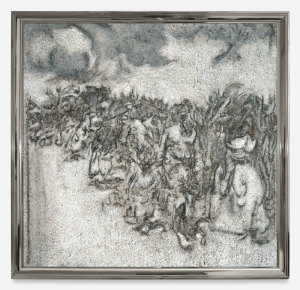 Key paintings and drawings are shown with materials from the Richard Artschwager’s personal archive, spanning the 1960s to his death in 2013, are on presentation in the exhibition “Primary Sources”. For five decades, Artschwager forged a maverick path by confounding the traditional limits of art and reconfiguring the visual comprehension of space. Associated with many genres but cleaving to none, Artschwager’s art has been variously described as Pop, Minimal, and Conceptual. Focusing on the structures of perception, his work conflates the visual world of images (painting) and the tactile world of objects (sculpture), with inspirations ranging from counterintelligence to cabinetry. Synthetic materials were critical to Artschwager’s project. He worked frequently with Celotex, a heavily textured, obdurate compound board that allows brushstrokes to remain palpable, producing grisaille paintings of images both topical and obscure, from newspaper photographs to landscapes and interiors. Info: Gagosian Gallery, 980 Madison Avenue, New York, Duration: 16/1-23/2/19, Days & Hours: Mon-Sat 10:00-18:00, https://gagosian.com
Key paintings and drawings are shown with materials from the Richard Artschwager’s personal archive, spanning the 1960s to his death in 2013, are on presentation in the exhibition “Primary Sources”. For five decades, Artschwager forged a maverick path by confounding the traditional limits of art and reconfiguring the visual comprehension of space. Associated with many genres but cleaving to none, Artschwager’s art has been variously described as Pop, Minimal, and Conceptual. Focusing on the structures of perception, his work conflates the visual world of images (painting) and the tactile world of objects (sculpture), with inspirations ranging from counterintelligence to cabinetry. Synthetic materials were critical to Artschwager’s project. He worked frequently with Celotex, a heavily textured, obdurate compound board that allows brushstrokes to remain palpable, producing grisaille paintings of images both topical and obscure, from newspaper photographs to landscapes and interiors. Info: Gagosian Gallery, 980 Madison Avenue, New York, Duration: 16/1-23/2/19, Days & Hours: Mon-Sat 10:00-18:00, https://gagosian.com
